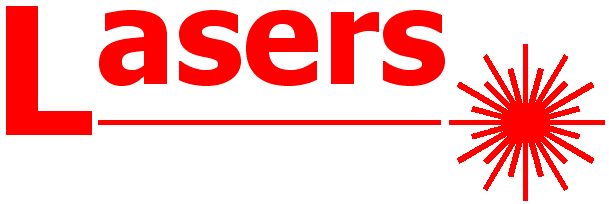
|

|

|
| Home | How Lasers Work | History of Lasers | Basic Information | Bibliography & Links |
|
LASER is an acronym for Light Amplification by Stimulated Emission of Radiation. This fundamentally says that Light is Amplified by photons (Radiation) Stimulating excited atoms to lower an energy level and Emit another photon.
Laser light is both varied and unique. It can be a continuous or pulsed beam, its wavelength can range from infrared to ultraviolet, it can range from an output of millionths to quadrillions of watts. For each specific laser, every photon has exactly the same wavelength, step, and direction. The beam is monochromatic, coherent, and collimated, which means that the photons are traveling parallel to each other. This results in a beam that widens very slowly. A laser beam shone at the moon from the Earth's surface (384,467 km) will only spread to 1.6 km, which is an angle of less than 0.000238 degrees. The photons also wave in the same direction, which means the beam is polarized. One can take a laser pointer and polarized sunglasses and rotate the beam to vary it from full power to nearly invisible.
Lasers are grouped into four basic categories based on their harmfulness.
|

This page was produced by Paul Swanson ( fspas10 {at} uaf.edu ) in November, 2004.